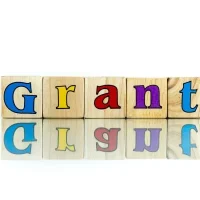The grant writing process is a multifaceted journey that requires a deep understanding of both the funding landscape and the specific needs of your organization. At its core, grant writing is not merely about filling out forms or adhering to guidelines; it is about telling a compelling story that aligns your mission with the goals of potential funders. This process begins with a clear identification of your organization’s objectives and the specific programs or projects that require funding.
By articulating your mission and the impact you aim to achieve, you lay the groundwork for a persuasive proposal. Moreover, understanding the grant writing process involves recognizing the various stages of proposal development. From initial brainstorming sessions to drafting, revising, and finalizing your application, each step is crucial.
It is essential to engage stakeholders within your organization during this process, as their insights can enhance the proposal’s depth and relevance. Additionally, familiarizing yourself with the specific requirements of each grant opportunity is vital. Different funders have unique expectations regarding format, content, and evaluation criteria, and tailoring your proposal accordingly can significantly increase your chances of success.
Researching and Identifying Potential Grant Opportunities
The first step in securing funding is to conduct thorough research to identify potential grant opportunities that align with your organization’s mission and goals. This involves exploring various sources, including government agencies, private foundations, and corporate sponsors. Online databases such as Grants.gov, Foundation Center, and Guidestar can be invaluable resources for discovering available grants.
Additionally, subscribing to newsletters or joining networks related to your field can keep you informed about new funding opportunities as they arise. Once you have compiled a list of potential grants, it is crucial to evaluate each opportunity carefully. Consider factors such as eligibility requirements, funding amounts, application deadlines, and the funder’s priorities.
A well-aligned grant opportunity not only matches your organization’s needs but also resonates with the funder’s mission. This alignment is essential for crafting a proposal that speaks directly to the funder’s interests and demonstrates how your project can help them achieve their goals. By investing time in this research phase, you can ensure that your efforts are focused on the most promising opportunities.
Crafting a Compelling Grant Proposal
Crafting a compelling grant proposal is an art that combines storytelling with strategic planning. A successful proposal begins with a strong executive summary that succinctly outlines your project’s purpose, goals, and anticipated outcomes. This section should grab the reader’s attention and provide a clear overview of what you are asking for and why it matters.
Following the executive summary, it is essential to provide a detailed description of your organization, including its history, mission, and past successes. This context helps funders understand your capacity to execute the proposed project effectively. The heart of your proposal lies in the project narrative, where you delve into the specifics of what you plan to accomplish.
Clearly define the problem you aim to address and present evidence that supports the need for your project. Use data, case studies, or testimonials to illustrate the urgency of the issue and how your organization is uniquely positioned to tackle it. Additionally, outline your project’s goals and objectives using the SMART criteria—Specific, Measurable, Achievable, Relevant, and Time-bound—to ensure clarity and feasibility.
Finally, conclude with a compelling call to action that reinforces why funding your project is a worthwhile investment for the funder.
Budgeting and Financial Planning for Grant Applications
Budgeting is a critical component of any grant application, as it provides funders with a clear picture of how their money will be utilized. A well-structured budget not only demonstrates financial responsibility but also reinforces the feasibility of your project. Begin by outlining all anticipated expenses associated with your project, including personnel costs, materials, travel expenses, and indirect costs.
Be transparent about how you arrived at these figures; providing detailed justifications for each line item can enhance credibility. In addition to outlining expenses, it is essential to include information about other funding sources or in-kind contributions that will support your project. This shows funders that you are leveraging multiple resources and are committed to the project’s success.
Furthermore, consider creating a budget narrative that explains each budget item in detail. This narrative can clarify any complex financial aspects and help funders understand how their investment will contribute to achieving your project’s goals. A comprehensive budget not only strengthens your proposal but also sets the stage for effective financial management if awarded funding.
Building Relationships with Funders and Grantmakers
Building relationships with funders and grantmakers is an often-overlooked aspect of successful grant writing and fundraising. Establishing rapport with potential funders can significantly enhance your chances of securing funding in the future. Start by researching funders who align with your organization’s mission and values; understanding their priorities will allow you to tailor your approach effectively.
Attend networking events, workshops, or conferences where funders are present to introduce yourself and share information about your organization. Once you have established initial contact, maintain ongoing communication with funders even when you are not actively seeking funding. Share updates about your organization’s achievements, challenges, and future plans through newsletters or social media.
This keeps your organization on their radar and demonstrates transparency and accountability. Additionally, consider inviting funders to visit your organization or participate in events related to your work; personal interactions can foster deeper connections and trust.
Tips for Successful Grant Management and Reporting
Once you have secured funding through a grant, effective management and reporting are crucial for maintaining a positive relationship with funders and ensuring future support. Begin by developing a comprehensive project management plan that outlines timelines, responsibilities, and key milestones. Regularly monitor progress against this plan to ensure that you stay on track and can address any challenges promptly.
Reporting is another critical aspect of grant management; most funders require periodic updates on project progress and financial expenditures. Create a reporting schedule that aligns with the funder’s requirements and stick to it diligently. When preparing reports, be honest about successes as well as challenges faced during implementation.
Funders appreciate transparency and are often more willing to provide support if they see that you are committed to learning from experiences rather than simply presenting only positive outcomes. In conclusion, mastering grant writing and fundraising requires a combination of strategic planning, effective communication, and relationship-building skills. By understanding the grant writing process, conducting thorough research on potential opportunities, crafting compelling proposals, budgeting effectively, building relationships with funders, and managing grants responsibly, NGOs can significantly enhance their chances of securing funding for their vital work in communities around the world.
With dedication and persistence, organizations can navigate the complexities of grant writing and fundraising successfully.








































